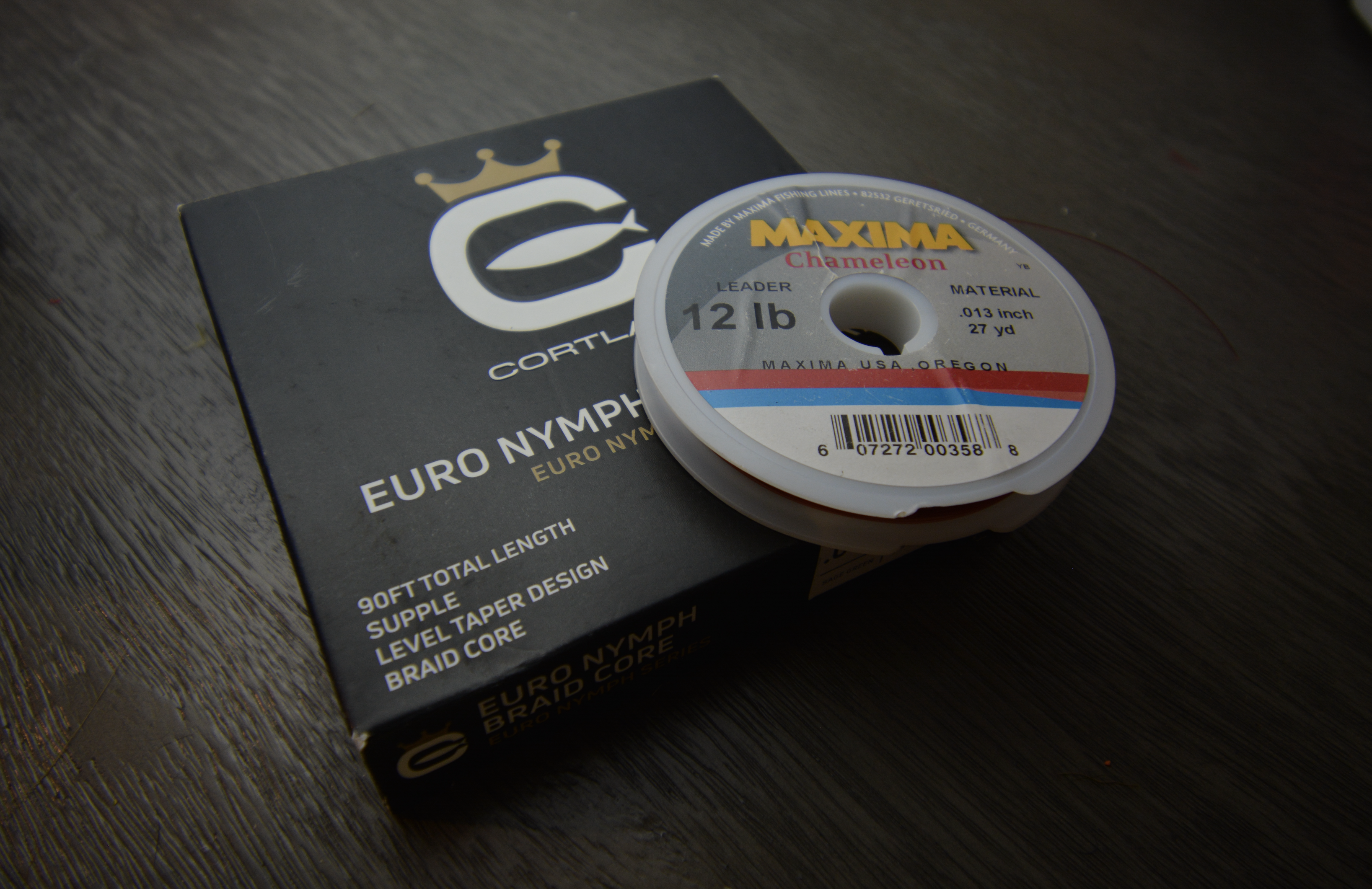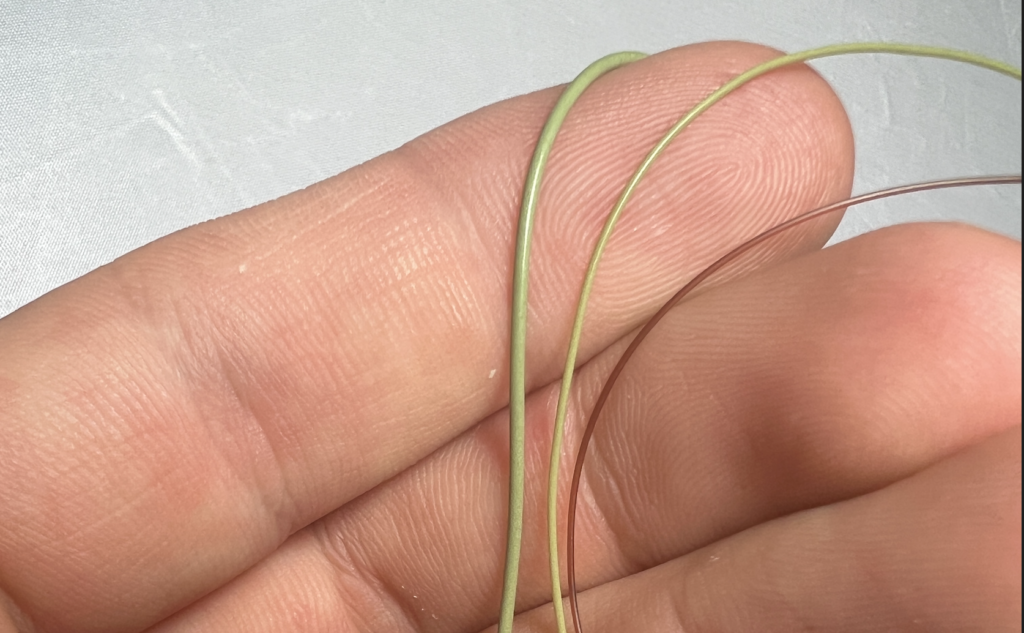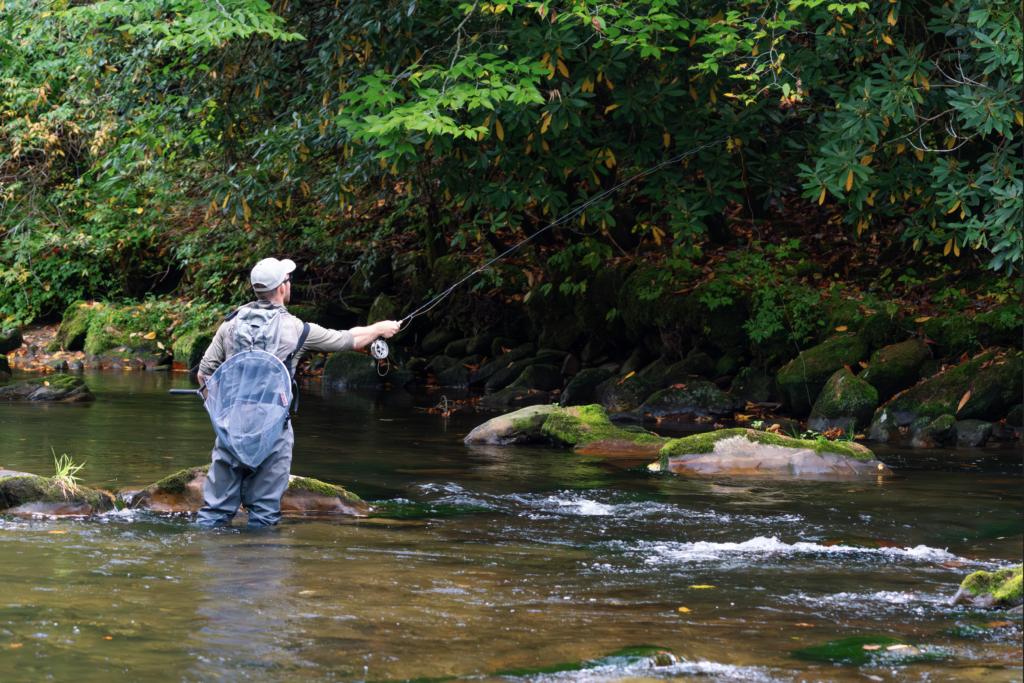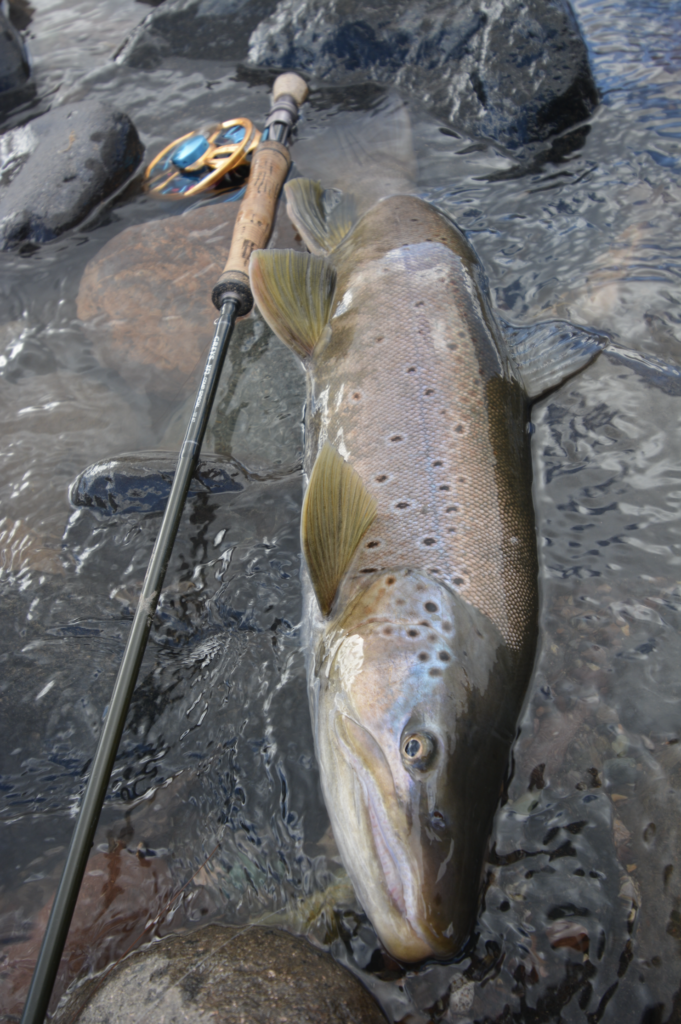
Do You Need a Euro Nymphing Line?
If you’re looking at diving into the world of tight line tactics, this is probably one of the first questions you asked. At first glance this seems straightforward. If you’re going to Euro nymph, you need a Euro nymphing line to do it. It’s a logical conclusion based on how often they’re talked about in fishing literature nowadays. Most resources out there are flooded with diagrams of tight line rigs that are attached to a nymphing line, but that’s not the only way to do it.
Euro lines are thin, level lines with no taper and little mass compared to to the average fly line, which makes them useful for reducing sag when tight lining. Really, a nymphing line is just meant to be a long extension of the butt of the leader. So then, why can’t you just extend the butt of the leader with mono and save yourself fifty bucks by forgoing the line? You can, and it works extremely well. These day’s a setup like this is usually referred to as a mono rig. The concept has been around for a long time, but has become increasingly popular over the last few years. The guys over at Troutbitten have probably had the biggest hand in this, and have a lot of great articles on the history and nuances of this setup.
There’s just enough information out there on all this that it gets hard to weed through and figure out what’s right for you. I figured it may be helpful to briefly compare and contrast both rigs, as well as explain why they’re better than a traditional setup for tight line tactics. First though, I have to set some constraints. There’s a lot of different nymphing lines on the market, and a lot of ways to set up a mono rig. To do a realistic comparison between both, I will primarily be talking about the standard version of both, which is a 0.22 inch diameter Euro line and a 0.17” (twenty pound) mono rig made from Maxima. You can get a range of lighter or heavier versions of them, and versions with varying stiffness. Most of the points I make still hold true in general, but some things are more noticeable in different rigs.
Why you don’t want to use a traditional setup to tight line
The quintessential fly fishing outfit consists of a weighted, tapered line and a relatively short tapered leader. The mass of the line deeply loads the rod and creates a lot of energy, which is good for casting flies far. When you’re primarily tight lining at shorter distances, the mass of the line becomes a hindrance.
Whether it’s in the fly or on the leader, most Euro rigs will have enough weight that you can load the rod without the added mass of a fly line anyways. When fishing these tactics, you want to hold as much line off the water as possible to avoid drag and stay in contact with your flies. The issue is that a standard line usually weighs way more than the weight on the leader. Gravity causes the line to sag downward, and the line then pulls the flies out of the seam you’re trying to fish. This is gets worse as more line is out of the rod tip, so with a standard nine foot leader, you won’t have much effective range.

You can certainly try to tight line with a traditional line and leader, and you’ll probably catch a few fish doing so, but you’ll have a much better time if you move to a Euro line or mono rig. They are substantially lighter than a tapered line, which reduces the amount of sag. You can maintain a good drift and contact at probably ten times the distance you can with a tapered line. You can even keep the tapered line on the reel, cut the tight lining setup down to thirty of forty feet, and tie it off the end like a super long leader. This way you can take it off and switch to traditional tactics quickly. It may feel weird to cut a fly line like this, but you’ll rarely fish over thirty feet of line while using a longer leader. You just want to make sure the tapered line stays on the reel when you’re tight lining.
Mono V.S. Euro
You know you need to move on from a traditional line, but what’s the best option? Mono rigs and Euro lines are overall pretty similar. After all, they’re designed to solve the same issue- line sag. I don’t think you can necessarily go wrong with either one. However there are some key differences that give each an advantage in certain situations. Depending on how you fish and what you want to get out of it, you may prefer one over the other. Below is a review of some of the main differences: Regulatory compliance, cost & durability, casting, & Sag, sensitivity, and handling.
Regulatory compliance
This category may sound like I pulled it out of a legal document, but it’s an important distinction between the two setups. Competitive fly fishing’s governing body, FIPs, banned mono rigs early on. They set minimum requirements for fly line length and diameter, as well as a cutoff for maximum leader length. Competitors needed a way to continue fishing tightline tactics while still complying with the rules. They turned to manufacturers to design lines that met the minimum standards that they could still fish like a long leader. I can’t say for sure this is where Euro style lines were born, but it’s certainly the reason they became popular. Outside of competitions, nymphing lines satisfy similar regulations for places such as fly fishing only areas and private waters. Check up on your local regulations, but if you fish anywhere with rules like this a Euro nymphing line is likely your only option.

Related- Repost: A Crash Course in Competitive Fly Fishing
Cost and durability
Going with mono will save you a lot of money. A regular ninety foot Euro nymphing line will run around fifty dollars, which is a good chunk of change for a lot of people. It’s rare to ever utilize the full line though, so you can buy half lines from some companies or cut a full one in half or thirds to get more. Best case you’ll still be out thirty bucks in the beginning. An eighty foot spool of Maxima, on the other hand, is only about six dollars. For an apples to apples comparison, nymphing lines average average sixty eight cents a foot, while a Maxima mono rig averages just five cents a foot. Mono is certainly the most economical way to get started with tight line tactics.
As far as longevity goes, you get a bit more life out of a nymphing line. My Cortland nymph lines last me around three years, whereas my mono rigs get a bit under a year. However, it’s hard to quantify how many hours a year I fish both to compare them. Not only that, you’re more likely to replace a mono rig when you need to. My older nymphing lines still work fine but are certainly not in pristine condition, and I could definitely benefit from buying new ones. However, the price makes me try and squeeze every drop of life I can out of them. On the other hand, I’ll replace a mono rig at the first sign that its performance is dropping. A few kinks or abrasions in it and I just pop a new one on, which actually forces a bit higher performance from the mono rig. These some personal preference at play as well, but in general I think you can expect at least twice the lifespan from from a nymphing line. As a side note, this is very dependent on line diameter. The smaller you go the more often it needs replaced. I fish mainly .006” micro rigs now, which I replace every three to four trips max. Even then, there’s still a huge cost savings with the mono rig.
Casting and Sag
If you’re fishing just the leader and only plopping your fly a few feet away from you, how each rig casts and sags isn’t a big deal. Once you start fishing out to twenty or thirty feet and the main line is out of the rod tip, ithey’re just about the most important qualities. The biggest advantage about a mono rig to me is that it’s light. Straight monofilament is a bit less dense than a nymphing line. That coupled with the smaller diameter of a twenty pound mono rig means it will have noticeably less sag. Mono comes in all shapes and sizes as well, so you can make your leader as thin and light as you want to reduce the sag even further. Euro lines only go as thin as 0.17”, similar to twenty pound mono, so you’re much more limited in how small you can take it. For that reason, I would usually prefer a mono rig for tactics where I’m holding line off the water at those larger distances.

As far as casting weighted flies, the setups function similarly. The mono rig outperforms the line slightly with weights down to around a 2mm bead, where the fly has the weight needed to do the work. This is is because in general it is both slicker and stiffer. The slickness is due to the fact that the mono’s surface is harder (less deformation in the guides) and smoother (less friction through the guides) than a Euro line coating. This, along with the stiffness, makes it more efficient at transferring energy from the cast. However, the Euro line definitely wins out when throwing dries or other unweighted flies. A mono rig can definitely throw a dry, but not as easily or as well. A Euro line has enough mass to load the rod and carry the energy necessary to make longer casts with a weightless fly. With a nymphing line and the right leader, you can easily switch from nymphing to throwing dries over thirty feet. It fills in the gap between a traditional line a mono rig; light enough to tight line well but heavy enough to carry a dry.
Handling
The things that make Euro nymphing lines slightly worse for casting make them better for handling. The fact that they are less stiff means they have less memory. How much less depends a lot on the core type, but even mono core lines are usually more supple than comparable mono rigs. This leads to significantly less kinking and coiling, which makes them easier find and manage while handling slack. Less coiling also means less tangles while casting. The coating on a Euro nymphing line also makes it easier to hold. The mono rig tends to slip through your fingers when stripping or fighting bigger fish because the hard, slick surface doesn’t offer much to hold on to. Euro lines have a rougher, softer surface that mitigates these issues. The slightly larger diameter of the nymphing line doesn’t hurt either. Though it’s not quite a handling aspect, a Euro line is much easier to see as well. Personally this doesn’t add much for me because I look mainly at the leader, but some may find it advantageous.

Do You Need a Nymphing Line?
The only time you need a nymphing line is if you fish under rules that make it necessary. If you don’t have any of any of these constraints to worry about, whether or not to fish a Euro line is up to you. Like anything else, it’s a tool you can pull out when the benefits are useful. Mono rigs offer a lot of advantages, but aren’t the best in every situation. Easier handling may not sound like much, but it can make or break a day fishing streamers, in heavy rain, or in freezing cold. The ability to throw a dry at distance is also a lifesaver during times when you need versatility, but don’t want to make a big setup change.
Personally, I fish a nymphing line more often than not for competition practice. I only pull the mono rig out when I know it will give me a significant advantage for the day. If I didn’t fish competitions, I would still have a Euro line on a fair amount, but the mono rig would certainly come into play more often. My advice, if you’re just starting out with these sorts of tactics, go the cheap route and start with a mono rig to see how you like them. If you’re more seasoned, give both a try, see what works, and find a system that’s good for you.
Good luck out there!
-Mike Komara
